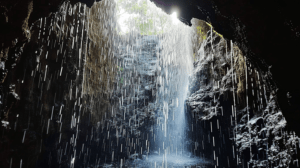History of the Mark and Lamb Trail: A Journey Through Time
The Marcos y Cordero Route is not just a trail; it is a portal through time that tells the vibrant history and geological evolution of La Palma, one of the most enchanting islands of the Canary archipelago. This article takes you on a detailed journey through the centuries, exploring how this trail has transformed from a simple nature trail to a world-renowned hiking destination.
Prehistoric Origins and Early Inhabitants
The origins of the Marcos y Cordero Route date back to the prehistoric era, when volcanic eruptions formed what we know today as La Palma. The first inhabitants of the island, the Benahoarites, used these natural paths as routes between villages and to access essential water resources. To walk the route today is, in many ways, to follow in the footsteps of these ancient islanders, whose culture and traditions still echo in the rustic landscape and winding trails.
The Castilian Influence and Agricultural Expansion
With the arrival of the Castilian conquerors in the 15th century, the Marcos y Cordero Route began to take on strategic importance. Settlers quickly recognized the richness of La Palma’s natural resources and used the route to transport water and crops, especially sugar cane, from the highlands to markets and ports. The construction of irrigation ditches and tunnels along the route during this period marked the beginning of a series of transformations that adapted the landscape to agricultural and economic needs.
Centuries of Water Use and Conservation
During the 17th and 18th centuries, the importance of the route as a water artery grew exponentially. Aqueduct and tunnel systems were expanded and perfected to handle the growing water requirements for crop irrigation. The engineering skill of the time, evident in the meticulous construction of these structures, highlighted not only advanced engineering but also a deep respect for nature and water resources. These systems remain a vital part of the route, and their maintenance continues to protect the biodiversity and ecosystem of the region.
The Revival of Hiking and Tourism
In the 20th century, the Marcos y Cordero Route experienced a renaissance, this time as a focal point for hiking and ecotourism. With the growing awareness of environmental conservation and the value of sustainable tourism, the route was rediscovered by nature lovers from all over the world. Local authorities, along with conservation organizations, have worked tirelessly to ensure that the route is not only accessible but also preserved for future generations. Informative panels and improved trails now guide visitors through this historic area, educating them about the ecological and cultural importance of the trail.
Cultural and Ecological Impact
Today, the Marcos y Cordero Route is not only appreciated for its natural beauty and recreational opportunities, but also as a symbol of La Palma’s cultural heritage. It is a living reminder of the island’s human history, showing the interaction between man and nature. The route is also a study site for ecologists and geologists, fascinated by its biological diversity and geological uniqueness.
The Future of the Route
Looking ahead, the Marcos y Cordero Route faces both challenges and opportunities. While tourism pressure and climate change present ongoing challenges, the joint efforts of the local community, conservationists and the government promise not only to preserve, but to enrich this natural treasure. Educational and conservation programs are underway to ensure that its history and beauty continue to be enjoyed by those who travel this historic trail.





